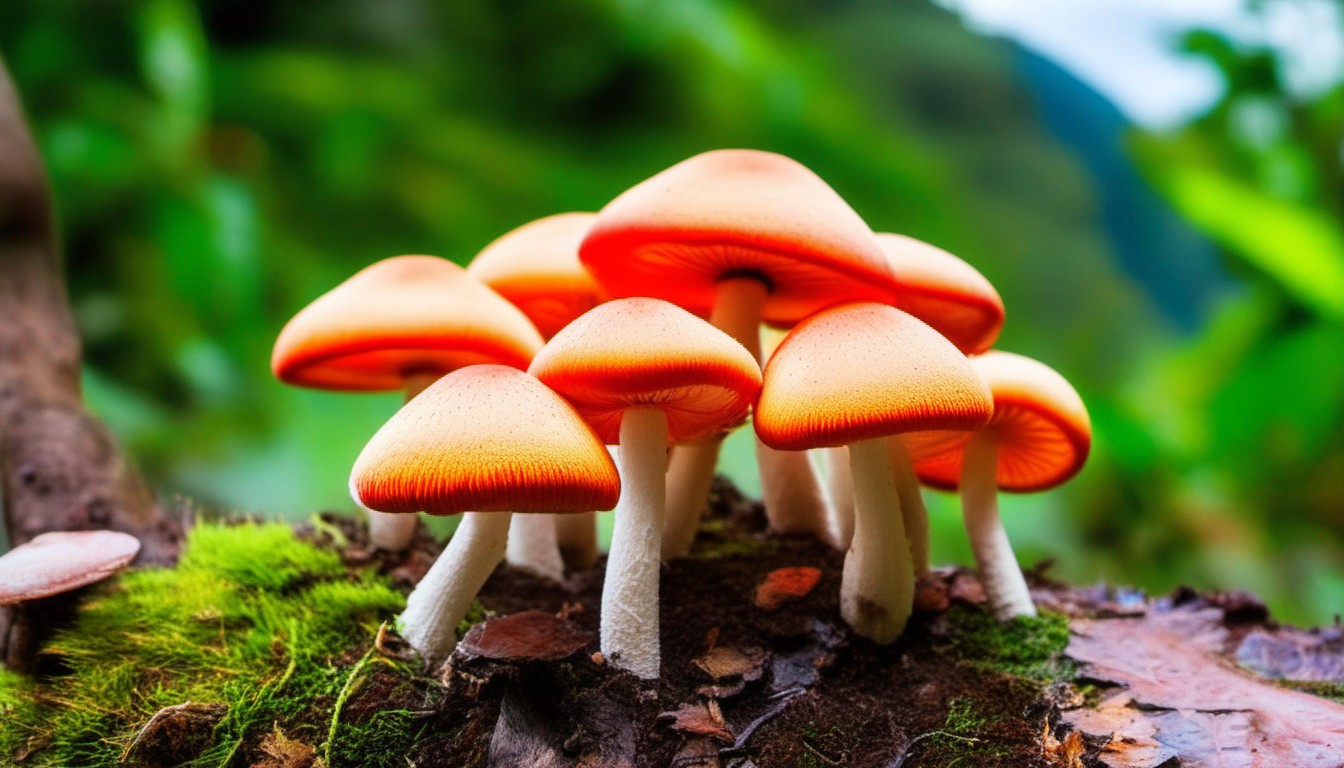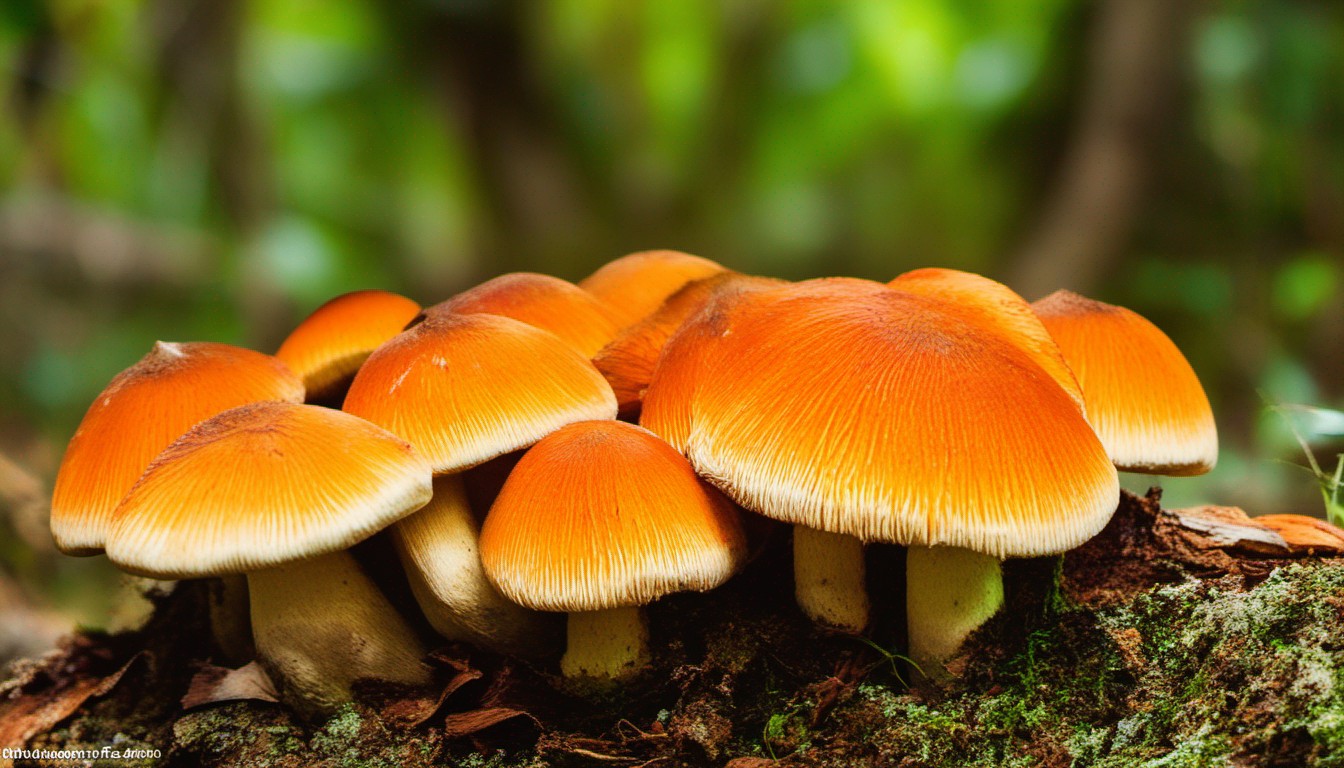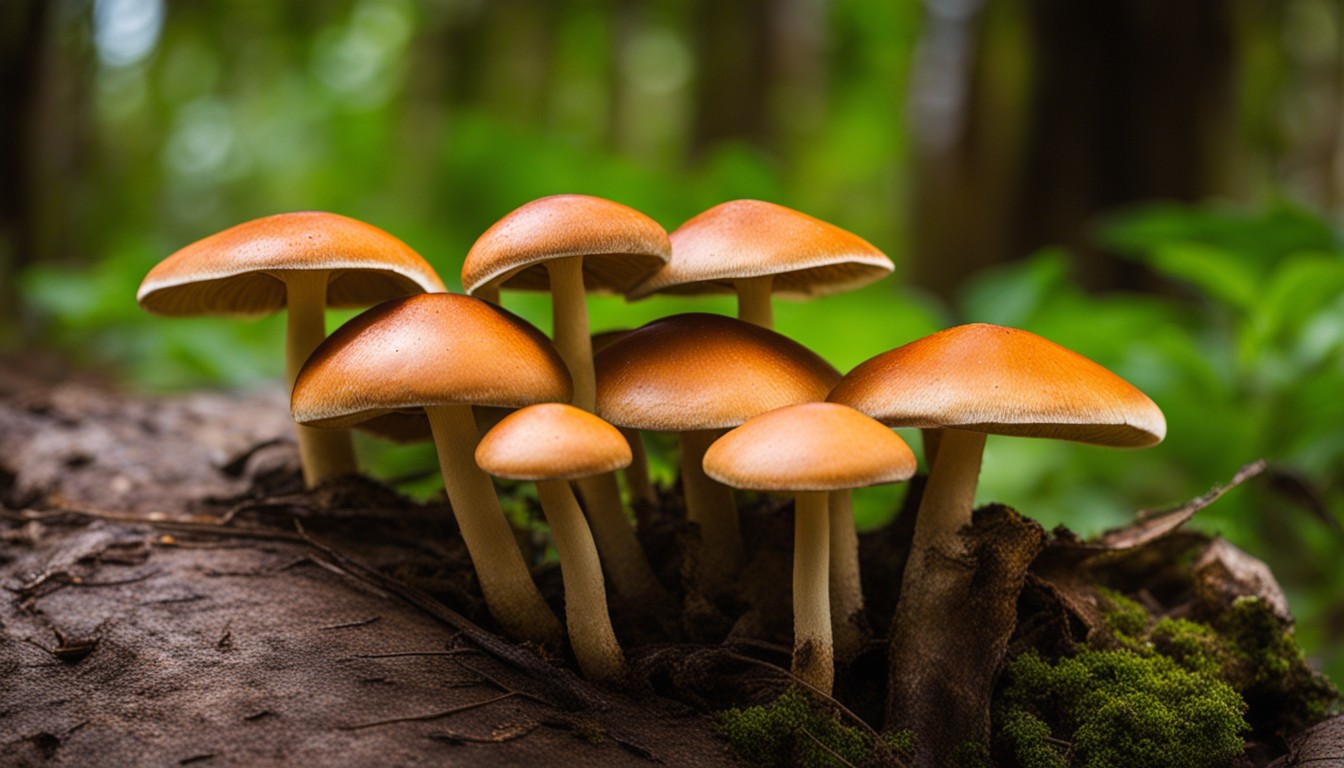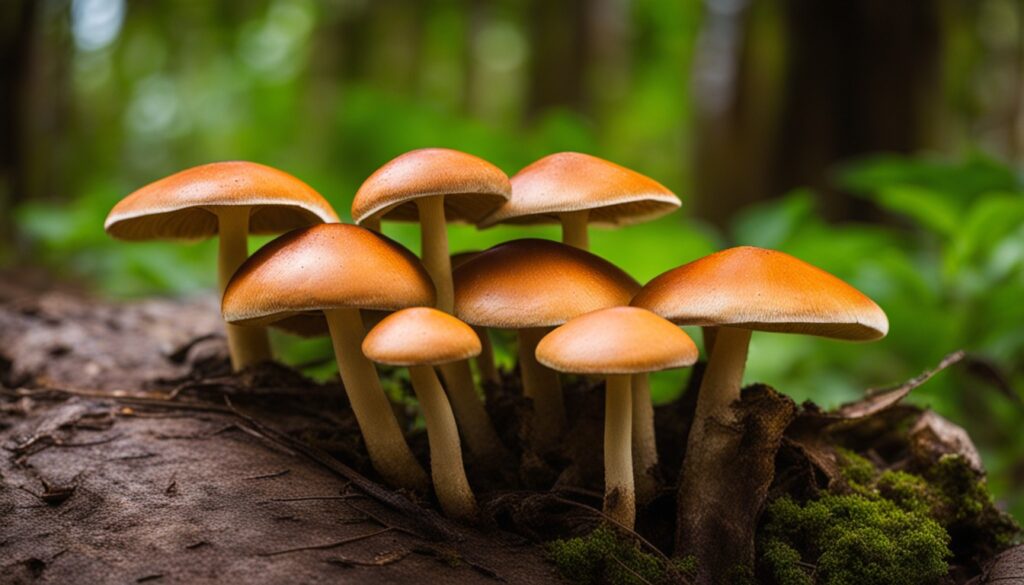Mushrooms in Guatemala: A Guide to the Fungal Diversity is an informative blog post that explores the rich and diverse mushroom species found in Guatemala. With its vast array of ecosystems, Guatemala is a haven for mushroom enthusiasts and nature lovers alike. This guide provides an in-depth look at the various types of mushrooms, their habitat preferences, and the importance of conserving these fascinating organisms. From the majestic Amanita muscaria to the delicate Chanterelles, this guide will take you on a journey through the captivating world of mushrooms in Guatemala. So grab your hiking boots, get ready to explore, and discover the hidden treasures of Guatemala’s fungal kingdom.
The Importance of Mushroom Diversity in Guatemala
Recognized as an integral part of Guatemala’s biodiversity, the diversity of mushroom species showcases a hidden world teeming with life and vitality. These fungal organisms contribute significantly to the overall health and functionality of ecological systems.
In assessing the health of Guatemala’s ecosystems, one cannot overlook the role of varied mushroom species. From nutrient cycling to habitat creation, these unique life forms underscore the intricate dynamics of biological symbiosis and collaboration.
The Role of Mushrooms in Ecosystems
In Guatemala’s vibrant ecosystems, mushrooms play pivotal roles such as nutrient cycling and assisting in decomposition, crucial to maintaining a balanced environment. Additionally, they foster unique symbiotic relationships with regional plant species, contributing to biodiversity.
- Mushrooms aid in the breakdown and recycling of organic material into valuable nutrients.
- They contribute to soil fertility and thus support the growth of plant species.
- Mushrooms facilitate seed dispersal aiding reforestation and succession.
- Various fungi form mycorrhizal associations with plants, enhancing their nutrient absorption capacity.
Medicinal Value of Guatemalan Mushrooms
As Guatemalan mycology unfolds, significant potential health benefits and therapeutic uses of native mushrooms are being discovered, casting light on the indigenous cultures’ traditional usage of these fungi.
- Analyses of the nutritional properties and bioactive compounds in native Guatemalan mushrooms.
- Observational studies focusing on traditional medicinal practices in Guatemalan indigenous cultures.
- Clinical trials studying potential therapeutic applications of Guatemalan mushrooms.
- Sustainable harvesting and cultivation practices for medicinal mushroom species.
Economic Significance of Mushroom Diversity
Guatemala’s mushroom biodiversity potentially contributes significantly to its local and national economies. Mushroom farming and foraging provide income sources that demonstrate economic potential for growth.
- Income generation through farming edible mushroom varieties.
- Development of rural economies via mushroom foraging.
- Creation of value-added products, like dietary supplements and traditional medicine.
- Promotion of eco-tourism with mycology tours.
- Potential for export of unique Guatemalan mushroom species.
Endemic Mushroom Species in Guatemala

Guatemala, home to unique mushroom varieties, distinguishes itself in global mycology. These irreplaceable species arise from the country’s varied habitats and climates, creating rich mycoflora diversity.
Guatemala’s unique endemic mushrooms manifest a rich mycoflora diversity, stemming from the nation’s distinct climatic and habitat diversity.
The endemic mushroom species in Guatemala are a testament to the country’s distinct climates and habitats. Their remarkable variety offers a window into the fascinating world of Guatemalan mycology.
Exploring the Mycological Treasures
Guatemala, brimming with mycological wonders, is a veritable showcase of fungal diversity, offering a kaleidoscopic array of mushroom species in its lush forests, enticing mycologists and nature enthusiasts on a captivating voyage into its unique fungi realm.
- Embarking on a quest to identify and appreciate the plethora of fungi species.
- Observing distinctive mushrooms in varied shapes, colors, and sizes.
- Noting the unique ecological roles of diverse species.
- Appreciating the intricate symbiotic relations among fauna and flora mediated by fungi.
- Exploring specific habitats favoring the growth of certain mushrooms.
- Diving into the rich history of indigenous knowledge and use of fungi.
Rare and Protected Mushroom Species
Guatemala harbors a rich array of rare and protected mushroom species, which are vital for the country’s biodiversity and ecological balance.
- Gomphus floccosus: a rare, funnel-shaped mushroom, protected due to its dwindling populations.
- Amanita phalloides: often termed as the ‘death cap’, despite its toxicity, it holds a protected status attributed to its ecological significance.
- Calvatia gigantea: a large puffball mushroom, scarce in Guatemala, safeguarded for its distinctive features and role in the ecosystem.
Conservation Efforts for Endemic Mushrooms
Guatemalan initiatives are springing up that seek to conserve endemic mushroom species, such as the Fungal Conservation Trust Guatemala. These projects focus not only on preservation but on teaching locals about fungi and their importance in the environment.
Local communities are integral in these conservation attempts. By spreading knowledge about the ecological significance of endemic mushrooms, they play an active role, which aids in their protection and sustainable harvesting.
Authorities contribute to these efforts by enforcing regulations that protect certain fungi species and support sustainable practices. Concurrently, they promote educational programs aiming to enhance mushroom identification skills within the community.
Edible Mushrooms Found in Guatemala

In the lush landscapes of Guatemala, a myriad of edible mushroom species thrive, reflecting the nation’s impressive biodiversity. These flavorful fungi not only enrich the local diet but also contribute to biodiversity conservation.
Foraging edible mushrooms in Guatemala offers a delightful journey into the heart of nature. Armed with the right knowledge, mushroom hunters can safely sample the culinary treasures Guatemala’s forests offer, enhancing their appreciation of the country’s fungal diversity.
Traditional Culinary Uses
Critically steeped in centuries-old indigenous recipes, mushrooms form the cornerstone of diverse Guatemalan dishes, adding their unique flavor and texture. They bring forth a culinary heritage, deeply influenced by the indigenous communities’ intimate relationship with nature.
A journey into the traditional Guatemalan culinary landscape reveals a hearty treasure of mushrooms, utilized for food since ancestral times. Their uses extend beyond mere nutrition to symbolize cultural identity and communal unity, cherishing each meal as a testament of shared heritage.
Popular Edible Mushrooms
Delving into Guatemalan cuisine, one is struck by the vast array of edible fungi. From local markets to fine-dining establishments, mushrooms lend their unique flavors to an assortment of dishes. Experience rich umami notes of the round-capped Boletus, or the hearty taste of the vibrant Cantharellus.
Guatemala’s diverse habitats play host to a plethora of remarkable edible mushrooms. The humid cloud forests shelter the delicate, aromatic Morchella, while the dry plateau regions boast the robust Agaricus species, lovingly referred to as ‘Guatemalan portobellos’.
Culinary adventurists are spoilt for choice with the rustic Lactarius deliciosus or the brightly hued Amanita caesarea, both part of Guatemala’s gastronomic tapestry. An adventure in flavors, textures, and colors, each mushroom brings its unique qualities to the plate, contributing to the richness of this vibrant cuisine.
Mushrooms in Guatemalan Gastronomy
Incorporating native mushrooms into traditional Guatemalan dishes imparts a unique blend of earthy flavors and robust textures. These fungi serve as vital ingredients, connecting chefs and diners to Guatemala’s rich biodiversity.
The unique flavors of Guatemalan mushrooms take center stage in the country’s culinary scene. From mono de navaja to seta de pino, each mushroom adds its own deliciously complex flavor profile, providing a gastronomic exploration of Guatemala’s fungal diversity.
Toxic and Poisonous Mushrooms in Guatemala
While the breathtaking fungi diversity in Guatemala yields a treasure trove of benefits, it also conceals potential dangers. Among the array of vibrantly hued mushrooms sprouting across the country, a number of species contain potent toxins, rendering them hazardous when mistakenly consumed.
The thrill of wild mushroom foraging in Guatemala comes with the necessity of caution. Knowledge about toxic mushroom species is paramount to avoid lethal encounters. From deceptively innocent-looking toadstools to elegantly tall stinkhorns, recognizing poisonous fungi contributes greatly to foragers’ safety.
Identifying and Avoiding Toxic Species
Toxic mushroom species in Guatemala can be deceptively beautiful, yet deadly. Identification is crucial, knowing the physical characteristics like the color, size, shape and spore color of toxic species is important.
Equipping oneself with practical knowledge is the first line of defense. Avoid mushrooms growing on trunks, near decaying matter, and those with white gills, as many poisonous species exhibit these traits.
Lastly, when in doubt, refrain from consumption. Only pick mushrooms you can identify with certainty. During guided tours or research excursions, be sure to have a trained mycologist on site for correct identification.
Mushroom Poisoning Cases in Guatemala
Guatemala has experienced several cases of mushroom poisoning, often due to mistaken identity of the species. These incidents have prompted deeper scientific investigation into the country’s diverse fungal flora.
Analysis of past poisoning incidents reveals that most victims consumed wild mushrooms without proper identification. Many edible species have toxic look-alikes, highlighting the crucial importance of accurate mycological knowledge.
While there’s a rich tradition of foraging for and utilizing mushrooms in Guatemalan culture, this historical practice comes with its risks. Past poisoning incidents serve as vital educational resources and cautionary tales, emphasizing the need for awareness about local toxic mushroom species.
Historical insight into mushroom poisoning cases in Guatemala sheds light on the susceptible groups, predominantly those relying on foraging for sustenance or medicinal purposes. Specific awareness programs targeting these groups could dramatically decrease the number of poisonings.
The landscape of mushroom poisoning in Guatemala has evolved over the years. Modern techniques for mushroom identification, combined with extensive public education, are instrumental in reducing poisonings. With each unfortunate incident, greater understanding and measures to prevent them in the future are developed.
Scientific Research and Mycology Organizations

Understanding the relevance of mycology and mushroom studies in Guatemala unveils a world of scientific intrigue. With a unique diversity of fungi at its disposal, the country boasts a rich resource for exploration and scientific discovery.
Advancements in fungal research within Guatemala’s scientific community have reached new heights. Firms and researchers alike strive for novel discoveries and growing knowledge through rigorous study and collaborative ventures, expanding humanity’s arsenal of invaluable biological wisdom.
Prominent Research Projects in Guatemala
Guatemala has become a hotspot for mushroom research; one ongoing project is the ambitious ‘Decoding Guatemalan Fungi’. This project aims to document and understand the biodiversity of local fungi, with facilitating initiatives such as interactive workshops, field trips, and modern laboratory studies.
In the realm of genetic research, the Guatemalan Fungal Genetics project stands out. Its focus is to deduce the genetic make-up of Guatemalan mushroom species, providing crucial genetic data that can help in their conservation and utilization.
Another significant project is the ‘Fungal Biodiversity and Systematics Study’. This project’s findings have led to the recognition of several new mushroom species endemic to Guatemala, significantly enriching global mycological knowledge.
One of the most groundbreaking studies is ‘The Ethnomycological Study of Guatemala’. Its survey and research findings have deepened understanding of the extensive use and importance of mushrooms in Guatemalan culture and diet.
The ‘EcoMycological Study’ investigates the ecological role and impact of fungi in Guatemalan ecosystems. It is uncovering invaluable insights into the intricate relationships between fungi, flora, and fauna, of Guatemala.
Collaborative Efforts for Mushroom Studies
A series of collaborative initiatives, extending from Guatemala to the global stage, underpin a comprehensive exploration of the country’s mushroom spectrum. These alliances fuse local knowledge with international scientific methodologies, strengthening the study of the nation’s rich fungal biodiversity.
These multinational endeavors have positioned Guatemalan mushrooms on the world scientific map, offering a deeper understanding of their role within the ecosystem. In turn, this understanding is reshaping how local communities interact with and view the importance of these fungi.
The impact of these efforts stands prominent, fostering an enlightened perspective, allowing mushrooms to take their justified space in the nation’s ecological narrative. The systematic integration of fungal study aids in the maintenance and enhancement of ecosystem resilience.
Moreover, the inception of these synergistic research initiatives propels the preservation efforts, contributing significantly to sustainability and the protection of Guatemala’s unique biodiversity. This meticulous research unravels the untapped potential of the varied mushroom species within the country, both for their ecological and socio-economic significance.
Mycology Organizations in Guatemala
Mycology organizations play an instrumental role in Guatemala, driving efforts to both conserve and study the country’s incredible diversity of fungi. They provide a platform for mycologists to exchange knowledge, facilitate research initiatives, and help safeguard this vital natural resource.
Through their continuous efforts, these organizations have transformed the scientific understanding of fungi in Guatemala. Bridging the gap between mycological research and practical applications, they have contributed to breakthroughs in areas like medicine and agriculture, underlining the importance of mushroom conservation.
Frequently Asked Questions about Mushrooms in Guatemala
What is the significance of mushroom diversity in Guatemala?
The rich fungal diversity of mushrooms in Guatemala holds great significance on multiple fronts. Ecologically, mushrooms play vital roles in nutrient cycling, symbiotic relationships, and forest health. Not only do they contribute to the economy through medicinal and culinary uses, but they also provide a habitat for numerous other organisms. Understanding and conserving this diversity is crucial for maintaining the balance of Guatemala’s ecosystems.
Are there any medicinal benefits associated with mushrooms in Guatemala?
Yes, many mushrooms in Guatemala have been traditionally used for their medicinal properties, offering potential benefits such as immune system support, antioxidant activity, and anti-inflammatory effects. Traditional healers and modern researchers alike recognize the therapeutic potential of certain mushroom species in promoting overall well-being and addressing specific health conditions.
Can mushrooms in Guatemala be used for culinary purposes?
Absolutely! Guatemala’s culinary heritage embraces the culinary versatility of mushrooms. From traditional dishes rooted in indigenous culinary traditions to modern, innovative recipes, mushrooms add depth, flavor, and texture to a variety of cuisines. Mushroom enthusiasts and chefs in Guatemala appreciate their unique tastes and incorporate them into various dishes, including soups, stews, sauces, and even vegan and vegetarian creations.
How can I explore and identify mushrooms in Guatemala safely?
To safely explore and identify mushrooms in Guatemala, it is recommended to consult with local experts, join guided mushroom forays or workshops, and familiarize yourself with local field guides. Proper identification is crucial to avoid potential risks, as some mushrooms can be toxic if consumed. Engaging with local mycological societies or connecting with experienced mushroom enthusiasts will provide valuable guidance and enhance your knowledge of the region’s fungi.
What conservation efforts are in place to protect the mushroom diversity in Guatemala?
Guatemala recognizes the importance of conserving its fungal diversity and has implemented several conservation initiatives. These include the establishment of protected areas that preserve mushroom habitats, the promotion of sustainable harvesting practices to ensure their long-term availability, and the education and awareness campaigns to highlight the ecological significance of mushrooms. Collaboration between government agencies, research institutions, and local communities plays a vital role in these conservation efforts.
Are there any poisonous mushrooms in Guatemala?
As with any region, Guatemala is home to some poisonous mushrooms. It is crucial to exercise caution when foraging for mushrooms and seek proper identification. Unless you are knowledgeable in mushroom identification or under the guidance of an expert, it is strongly advised to refrain from consuming wild mushrooms. Understanding the potential risks and being able to differentiate between edible and non-edible species is paramount to ensure your safety.
How can I contribute to the preservation of mushroom diversity in Guatemala?
You can contribute to the preservation of mushroom diversity in Guatemala by supporting local conservation efforts and initiatives. This can include participating in citizen science projects, volunteering with organizations dedicated to fungal conservation, and promoting sustainable practices such as responsible foraging and the preservation of natural habitats. Educating others about the importance of mushrooms in the ecosystem and their conservation needs is also a valuable contribution to raising awareness and fostering a culture of mushroom appreciation.
Where can I find more information about mushrooms in Guatemala?
For more in-depth information about mushrooms in Guatemala, you can refer to local mycological societies, scientific publications, online resources, and engage with experts in the field of mycology. These sources can provide detailed insights into specific mushroom species, research studies, ongoing conservation efforts, and opportunities for further involvement in the study and appreciation of mushrooms in Guatemala.
Conclusion
The study of mushroom diversity in Guatemala reveals a vibrant landscape, teeming with indigenous fungal species that contribute significantly to the local ecosystem, medicine, economy, and gastronomy. As we look towards the future, the potential avenues for mushroom research in Guatemala continue to multiply, underscored by promising medicinal applications, eco-conservation efforts, and culinary delights.
- Future research opportunities include exploring new medicinal applications of mushrooms.
- Mushrooms play an important part in ecosystem conservation and can be the focus of eco-conscious initiatives.
- Unraveling the potential of indigenous mushroom species in Guatemalan gastronomy opens avenues for culinary innovations and tourism.

